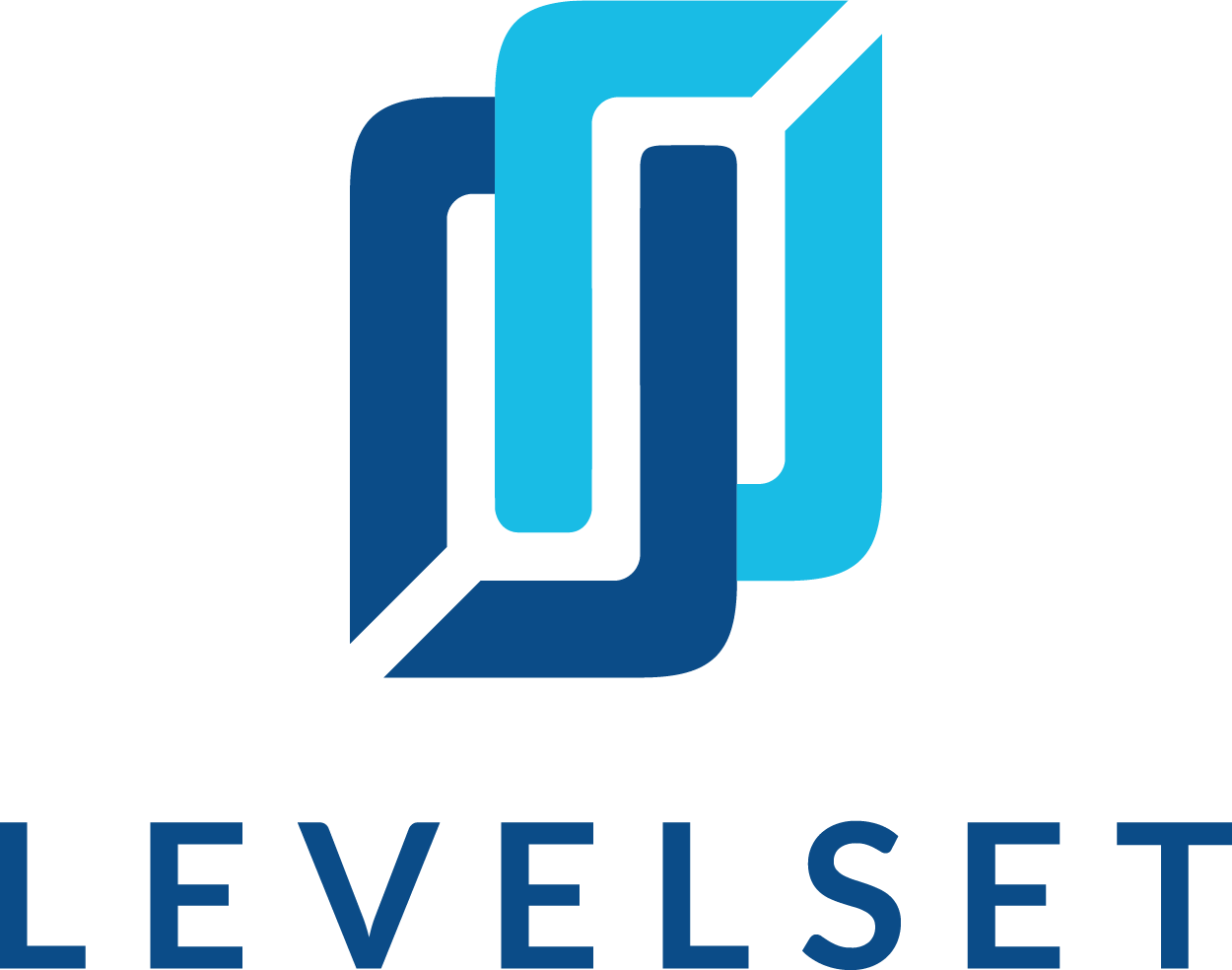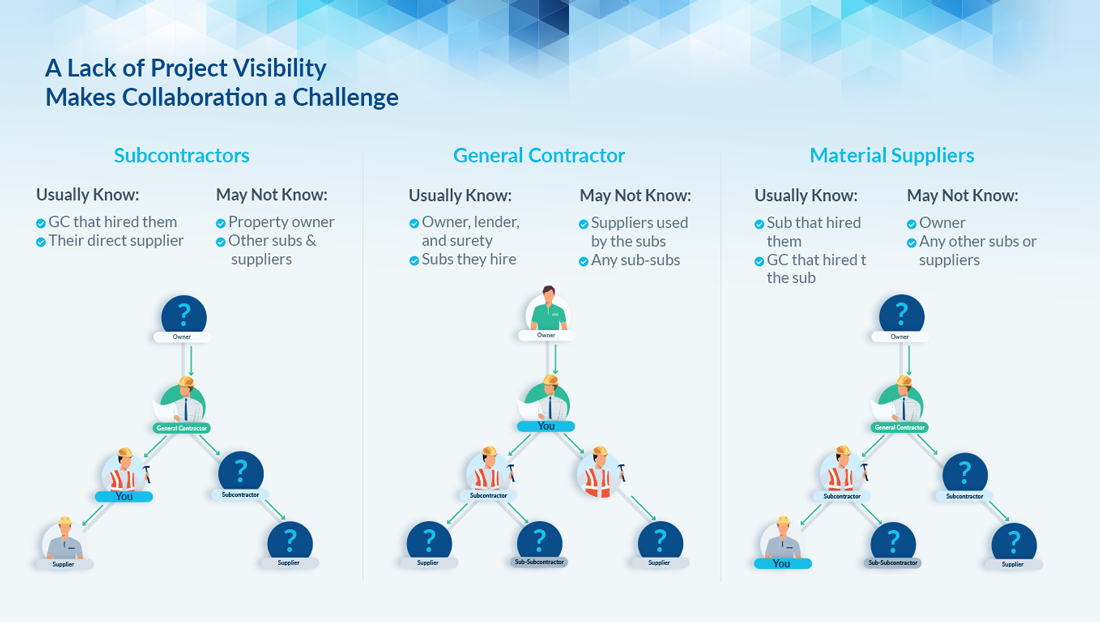
When it comes to project payments, the construction industry’s standard operating procedure has been focused on protection and enforcement rather than on collaboration. The results – and the negative financial impact on individual construction businesses and the industry as a whole – have been disastrous.
How bad is it, you ask? Here are a few things to consider:
- It takes longer to get paid in construction than just about any other industry
- Some parties on a construction project will withhold payments (in the form of retainage or even just the payment itself) as leverage to gain an unfair advantage over other parties on the project
- Even when the system of payments operates perfectly on a project, there is still too much complexity that makes getting paid more challenging than it should be
Although it’s been this way for decades (or even longer), does the system of payments in the construction business have to remain so adversarial? Is it possible for all parties on a project to avoid risk, payment issues, and complete a job successfully, all without having to rely on a “protection-first” mindset? Could some of these issues be solved through better communication enabled by better technology? Let’s explore.
Lack of Visibility Makes Collaboration a Challenge
After talking to literally thousands of GC’s, subs, and suppliers, we’ve seen that many project issues arise because of distrust that’s caused by a lack of visibility and collaboration. To illustrate this point, let’s consider a typical project where a GC withholds payment to a sub (or multiple subs).
There are many possible justifications the GC could have for doing this that range from “unfair” practices (i.e., in order to gain leverage over the subs on the project) to something that is more on the “fair” end of the spectrum (retainage allowed by the contract).
However, after the GC withholds the payment, what happens next? The subs are then forced to withhold payments to the parties below them – sub-subs, suppliers, and others – creating a financial ripple effect that ends up negatively impacting everyone on the project.
For a GC that’s (unfairly) looking for leverage, withholding payments can backfire – if payments are delayed too long, other project participants may end up filing a mechanics lien to try to speed up the payment. Of course, this same outcome could also happen to a GC withholding payments for a “fair” reason – if they hold on to the payments for too long, lower-tiered project participants may be forced to file a lien in order to get paid.
A Better Way
There’s better way to manage the problem of payment that doesn’t involve relying on the nuances of lien law while also empowering the participants on a construction project to proactively collaborate with one another by increasing the overall project visibility. That better way can be summed up in one word: Technology.
Technology Means Better Logistics
It can be difficult for a business to track the multitude of lien laws manually or with a service provider that doesn’t have the capability to understand how an individual business works on each job. Specifically, there are over 100,000 unique combinations of rules and requirements related to liens. Technology can be a powerful tool to help GCs and other parties near or at the top of a project minimize their exposure to risk by by requesting and collecting waivers while enhancing communication. And parties from the subcontractor level on down can use the same technology to send notices and exchange waivers up the chain which enables them to both secure and speed up their payments.
Exchanging documents in this way protects everyone while also increasing visibility for everyone across the board. That’s a win-win.
Payment Technology Means Better Organization
Not only is it important for a business to stay current in the best practices out in the field, but the back office needs to stay organized for efficiency and compliance. An ideal tech solution should be able to manage any documents such as notices or waivers sent on a project in one place (whether these are sent by a GC, supplier, or sub). Alternatively, for the best visibility on a project all parties should know who is on the jobsite and for how long. This can avoid payment disputes and allow parties to send waivers electronically to speed up any issues.
Smart contracts and blockchain technology hold a lot of promise for speeding up payments and projects, but it’s still in its early stages.
Payment Technology Means Better Planning
Good construction tech solutions should allow a team to prepare for future jobs by looking at past missteps or solve a direct pain point. This could be something as simple as reducing overhead from manual paperwork, time spent tracking project deadlines, or understanding the P&L of a particular job relationship. Additionally, field managers should be able to improve processes on-site as well as communicate any warning signs to the office on project delays or backlogs that could cause the project not to be completed on time.
Payment Technology Means Better Project Control
There are many options for managing a project that help contractors and businesses to stay on task; however, the best options should allow the jobsite and the office to stay connected. This means that project managers, office managers, accountants, and human resources can all benefit from software in order to managing lien documents electronically, understanding bid schedules, job accounting, and payroll. In this way each department can supervise individual aspects of project to impact the business as a whole. If a project is successful, then the business can look forward to revenue growth without overextending resources or manpower.
Payment Technology Means Better Financial Control
Finally, construction payment technology solutions for the industry should allow for accurate reporting, solid management of cash flow, and help to manage debt and retainage. Accuracy is important, not only to avoid losing out on any payments or missing any deadlines, but also to streamline payment to help parties get paid faster.
Conclusion
Overall, the process of managing lien compliance is a small part of construction payment technology, but it benefits all parties, whether that’s sending or requesting waivers or understanding what parties are on the jobsite in order to send notices. Better technology allows for more open communication, successful project management, timely payment, and less need for protection. This is a win for everyone.
Further reading:

